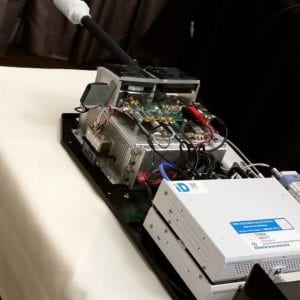One of the initial challenges of 5G, particularly for millimeter-wave fixed wireless access, is how carriers determine where to place new network equipment and customer premise equipment and where they can guarantee coverage. New 5G field testing solutions have to be developed that support mmwave and give operators the information they need in order to tell potential new customers what coverage and speeds they can expect — a tall order, considering how susceptible mmwave is to being blocked by physical obstructions, passing traffic or tree foliage.
In a technical session at the recent 5G Innovation Summit, Jeremy Cline. product manager for wireless network test at Rohde & Schwarz, spoke about how the test company went about developing a 5G field

testing solution for Verizon’s 5G Technical Forum specification at 28 GHz, to help the operator create coverage heat maps.
“They needed a way to do coverage prediction. So they would go out with the infrastructure vendors and they have these CPEs that they want to figure out where they’re going to put it in, say, an office building or even someone’s home — and you don’t want to be in there very long. So you need a tool to allows you to make these coverage heat maps of where you actually get that signal,” Cline said. “So we set out to build something like that, and we did.”
Cline showed the earliest, pre-commercial version of the test set-up. R&S leveraged an existing backpack-based walk test solution, it’s FreeRider 3 offering, which consisted of a hard-shell box set up to hold half a dozen smartphones plus a scanner. Cline explained that the company stripped down that box and kept the scanner and a four-battery pack, added a down-converter in order to extend the range to 28 GHz, and an omni antenna that extends beyond the backpack frame overhead, in order to avoid any impacts to the signal from the body of the test engineer. Watch the full interview below:

